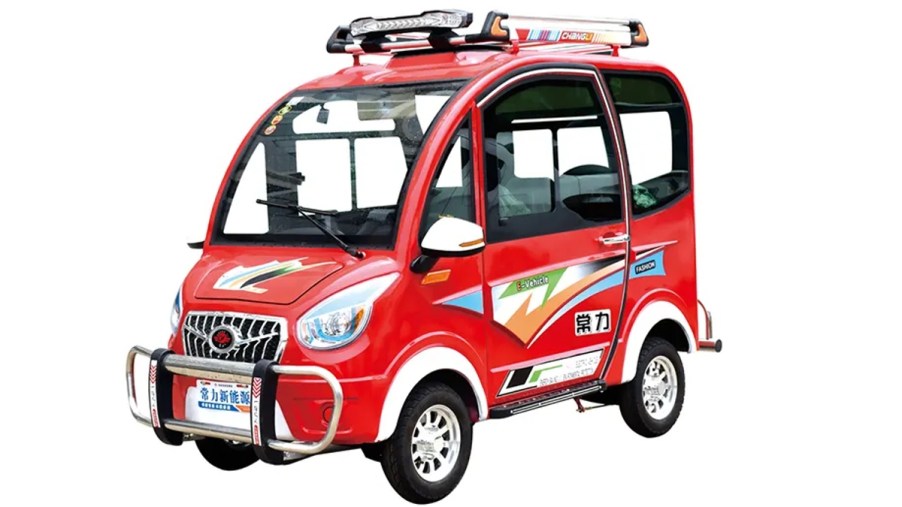
Cheapest New Car in the World Costs Only $1,000 — and You Can Order It!
High inflation has caused the price of new cars to skyrocket — putting them financially out of reach for many people. However, some highly affordable vehicles can be found outside the United States, particularly in emerging markets like China. That includes the all-electric ChangLi Nemica. It’s the cheapest new car in the world, costing only around $1,000. Plus, Americans can own the Nemica by ordering it online.
The ChangLi Nemica is the cheapest new car in the world

With a starting price that varies between $930 and $1,249, the ChangLi Nemica is the cheapest new car in the world. It’s also the world’s cheapest new EV. Most of the new vehicles with rock-bottom prices are from China. The next most affordable model is the Minghong S1-PRO ($1,265).
Here are the world’s cheapest new cars:
- ChangLi Nemica: $930
- Minghong S1-PRO: $1,265
- Haibao Qiao Hu: $1,669
- MH S3: $1,811
- QK Pickup: $1,859
- ChangLi 003: $1,988
- R&Z SUV: $1,990
- ChangLi PK-002: $2,058
- ChangLi Mini Solar: $2,090
- Hongsheng Pickup: $2,500
Like the ChangLi Nemica, many of these affordable Chinese cars can be ordered from the online shopping site Alibaba and shipped to the United States. Alibaba is similar to Amazon but with even more selections, including cheap vehicles. However, a key point to remember is that the prices listed for these cars don’t include shipping costs and customs fees.
The Nemica is not as bad as you might think
When seeing the $1,000 price for the cheapest new car in the world, it’s natural to assume it’s a low-quality vehicle. However, while the ChangLi Nemica has some limitations, it’s not as bad as you might think.
Jason Torchinsky from Jalopnik ordered and drove the ChangLi — and reported on it when new and after one year of use. In China, the Nemica, with its comical vertically orientated shape and compact dimensions, is primarily used by taxi drivers in rural areas to give mobility access to older people who can’t drive. With its rear-wheel-drive electric motor, it has a top speed of 23 mph and a driving range of 28 miles. Inside the cabin, there’s a radio that can play MP3s. There’s also a backup camera.
For the test drive, the driving dynamics were better than expected, thanks to the responsive steering and nimble handling. Also, the suspension provides a surprising amount of cushioning from road imperfections.
Additionally, the Nemica held up fairly well after one year — considering its low price. Torchinsky said many people didn’t think it would last and “would dissolve into a pile of rust and pain in a matter of weeks.” However, despite heavy use “and not babying it,” the ChangLi still runs well.
Is the ChangLi Nemica street legal?

The street-legal nature of the ChangLi Nemica varies by U.S. state, depending on the regulations. Technically, the electric car doesn’t meet the Federal Motor Vehicle Safety Standards for a vehicle of its class. However, some locations have looser restrictions. Torchinsky said he uses the ChangLi for errands around town, like picking up a restaurant takeout order.
However, with a top speed of only 23 mph, the Nemica is obviously not suited for highway use. But for city driving and short trips, it works fine. Also, in places where it’s not street-legal, the Nemica could be a good option for people with large properties. Though not a fast-moving electric car, it’s much more than a glorified golf cart.
The ChangLi Nemica is the cheapest new car in the world. And for those willing to wait for the long shipping time from China and potential hassles with customs, it can be ordered from Alibaba. However, according to a recent human rights report, Chinese automotive manufacturers have connections to slave labor in the Xinjiang region of China, so that’s something you might want to consider.
Unfortunately, with the expansiveness of the global supply chain, forced labor in China touches the entire automotive industry for car parts. As detailed in the report, if you bought a new vehicle in the past five years, it’s likely tainted by forced labor.





